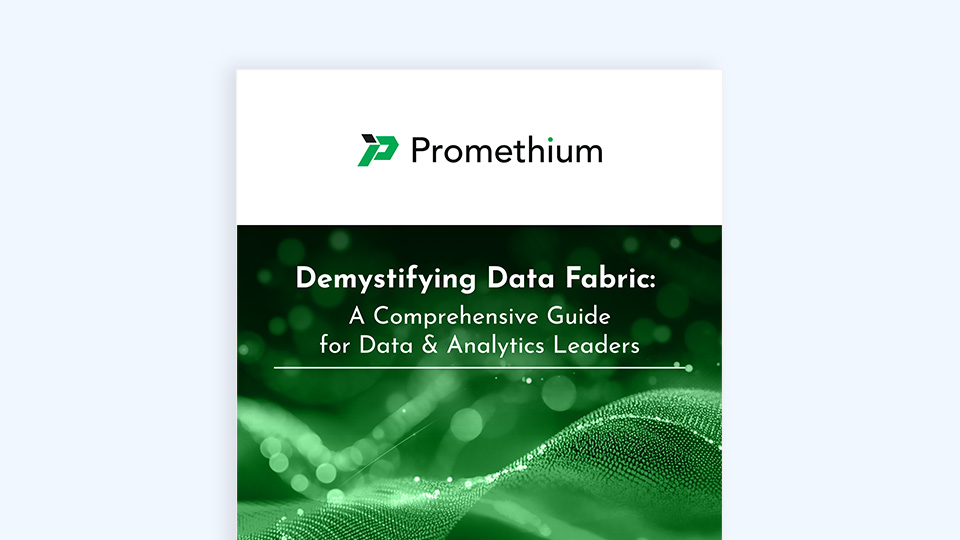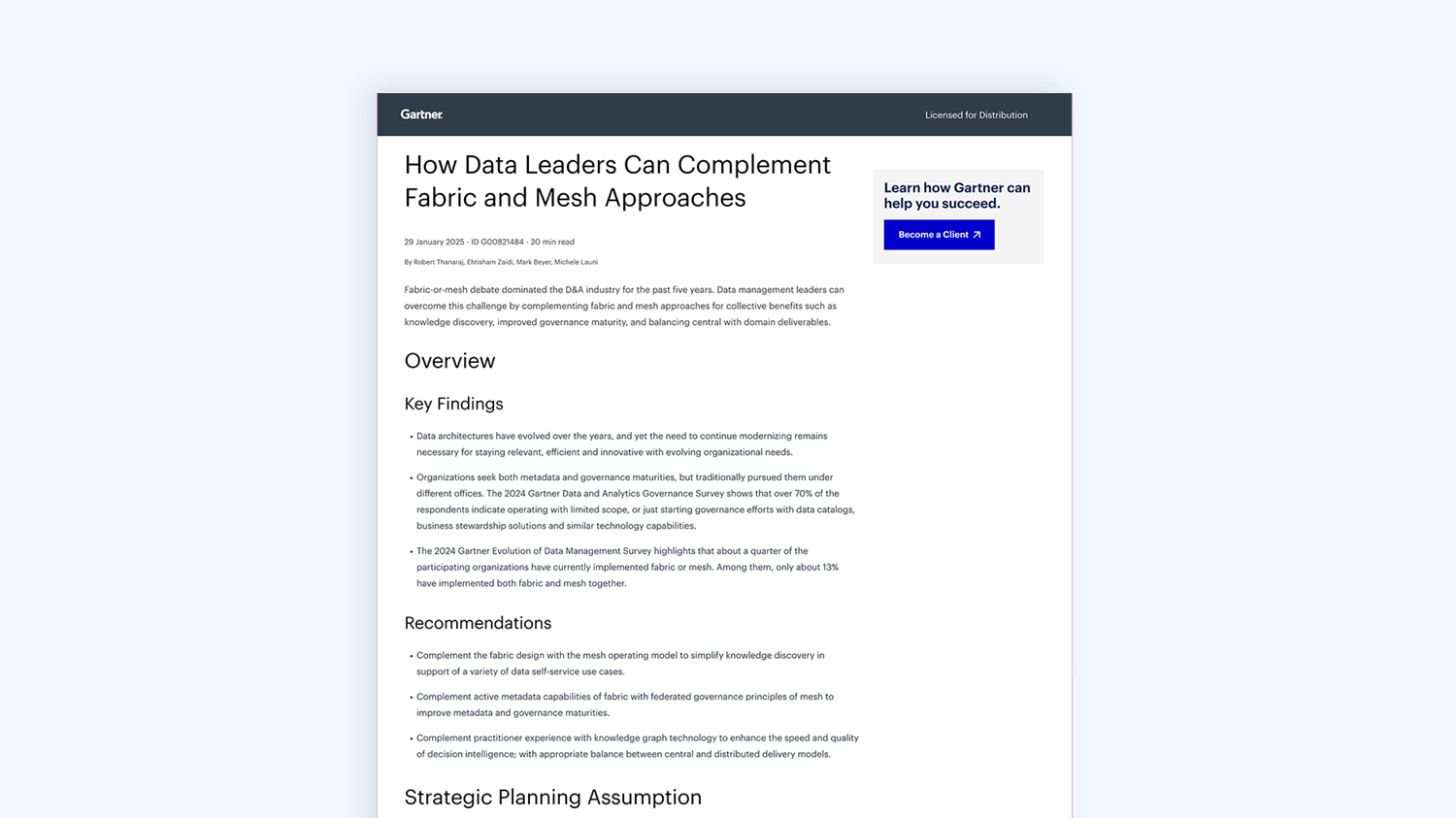The Hidden Cost of Enterprise Data Silos
Business Impact Across Industries
Data silos affect organizations across all sectors, creating:
Operational Inefficiency
Teams spend 60-80% of their time locating and preparing data instead of generating insights
Missed Business Opportunities
Critical decisions delayed by weeks due to data access bottlenecks
Duplicated Efforts
Multiple teams building similar reports and analyses from fragmented data sources
Compliance Risk
Inconsistent data governance across systems creating regulatory exposure
Poor Customer Experience
Incomplete customer views leading to missed personalization and service opportunities
The Anatomy of Data Silos
Data silos emerge from natural business evolution:
Departmental Systems
Each business unit implements specialized tools for their specific needs
Acquisition Integration
Mergers and acquisitions create multiple overlapping systems
Legacy Technology
Older systems that weren’t designed to share data with modern platforms
Vendor Lock-in
Proprietary systems that resist integration with external platforms
Rapid Growth
Fast-scaling organizations outpace their integration capabilities
Why Traditional Solutions Fail
Traditional approaches to data silos rely on complex ETL processes and data warehouses, which create:
- Integration Complexity: Custom development projects taking 6-18 months to connect each new data source
- Data Movement Overhead: Copying and transforming data creates latency, storage costs, and synchronization issues
- Maintenance Burden: Brittle integrations that break when source systems change, requiring constant IT support
- Limited Agility: Business users still depend on IT for data access, preventing self-service analytics and rapid decision-making
Modern Approach: Data Fabric for Silo Elimination
How Data Fabric Works
Data fabric addresses data silos through intelligent virtualization and automated integration:
Zero-Copy Data Access
Instead of moving data, data fabric creates virtual access layers that query data where it lives. This eliminates data duplication while providing unified access across all systems simultaneously.
Automated Discovery and Cataloging
Data fabric platforms automatically discover data sources, understand schemas, and create unified catalogs or semantic layers with rich metadata that make data findable and accessible without manual mapping efforts.
Unified Query Layer
Data fabric creates a consistent interface for accessing data across all systems, enabling business users to query multiple sources through a single access point without needing to understand the underlying technical complexity.
Intelligent Query Optimization
Advanced query engines optimize performance across distributed systems, ensuring fast response times even when accessing data from dozens of sources simultaneously.
Key Differentiators
Modern data fabric platforms provide:
- Data-in-Place Strategy: Access data where it lives without costly migration or duplication
- Real-Time Processing: Query live data across systems without delays from batch processing
- Universal Governance: Consistent security, privacy, and compliance policies applied across all data sources
- Intelligent Automation: AI-powered data discovery and cataloging that adapts continuously

Industry Applications for Data Fabric to Eliminate Data Silos
Financial Services
Unified Risk and Customer Data
Challenge: Risk managers need comprehensive exposure data across trading, lending, and investment systems but must manually access multiple platforms, creating delays in risk assessment and regulatory reporting.
Solution: Data fabric provides instant access to unified risk and customer data across all business lines through conversational queries like “Show me total credit exposure by sector including derivatives positions.”
Results: 60% faster risk reporting, 40% improvement in risk assessment accuracy, enhanced regulatory compliance across all business units.
Learn More About Data Fabrics in Financial Services Learn More About Data Fabrics in Financial ServicesHealthcare
Integrated Patient and Operations Data
Challenge: Clinical and business teams need comprehensive patient data across EHRs, billing, and operational systems but face complex integration challenges and HIPAA compliance requirements.
Solution: Data fabric enables unified patient profiles combining available clinical data, financial records, and operational metrics while maintaining strict healthcare privacy controls.
Results: 25% improvement in care coordination, 50% faster financial reporting, enhanced patient satisfaction and revenue optimization.
Learn More About Data Fabrics in Healthcare Learn More About Data Fabrics in HealthcareManufacturing
Connected Production and Supply Chain
Challenge: Production managers need operational data across ERP, MES, IoT sensors, and supply chain systems but traditional integration creates delays in production optimization and quality control.
Solution: Data fabric provides real-time access to unified production data with queries like “Show me production lines with quality issues and available capacity for priority orders.”
Results: 25% improvement in overall equipment effectiveness (OEE), 30% reduction in supply chain inefficiencies, enhanced manufacturing agility.
Learn More About Data Fabrics in Manufacturing Learn More About Data Fabrics in ManufacturingRetail
Omnichannel Customer and Inventory Integration
Challenge: Marketing and operations teams need unified customer and inventory data across e-commerce, POS, and supply chain systems but fragmented data prevents effective personalization and inventory optimization.
Solution: Data fabric enables comprehensive customer profiles and real-time inventory visibility across all channels through natural language queries.
Results: 40% improvement in campaign conversion rates, 30% reduction in stockouts, 25% increase in customer lifetime value through better personalization.
Learn More About Data Fabrics in Retail Learn More About Data Fabrics in RetailImplementation Approaches
Traditional vs. Modern Implementation
| Factor | Traditional Integration | Data Fabric Approach |
| Deployment Time | 6-18 months per connection | Days to weeks for multiple systems |
| Technical Requirements | Custom ETL development, data warehouses | Zero-copy virtualization, automated discovery |
| User Adoption | IT-dependent access, SQL skills required | Self-service, natural language queries |
| Maintenance Overhead | High – breaks when systems change | Low – adapts automatically to schema changes |
| Scalability | Linear cost increase per source | Exponential value increase with more sources |
Best Practices for Data Fabric Implementation
Phase 1: Assessment and Planning
- Audit existing systems and identify critical data silos affecting business operations
- Map current integration landscape and identify highest-value connection opportunities
- Define success metrics and establish baseline measurements for productivity and decision speed
Phase 2: Pilot Implementation
- Start with 2-3 core systems that represent major business value
- Enable self-service access for key business users in marketing, finance, or operations
- Measure time-to-insight improvements and user adoption rates
Phase 3: Enterprise Rollout
- Expand to additional systems based on pilot success and business priorities
- Enable organization-wide self-service data access for all business teams
- Integrate with external data sources for enhanced market intelligence and competitive analysis
Technology Solutions and Vendors
Traditional Enterprise Platforms
- Vendors: IBM Cloud Pak for Data, Microsoft Fabric, Informatica
- Strengths: Comprehensive data management capabilities, enterprise-grade security
- Limitations: Complex deployment, high infrastructure costs, extended implementation timelines
Do-It-Yourself Custom Solutions
- Approach: In-house engineering teams building custom data integration platforms
- Strengths: Complete control over architecture and functionality
- Limitations: Requires significant internal development resources, high ongoing maintenance burden, limited scalability as data sources grow
Modern Data Fabric Platforms
- Next-generation vendors: Including Promethium and other specialized data fabric solutions
- Key advantages: Rapid deployment, intelligent automation, data-in-place architecture
- Differentiators: Zero-copy access, AI-powered discovery, unified governance across all sources
For detailed vendor comparisons and selection criteria, see our Data Fabric Vendor Analysis.
Measuring Success
Key Performance Indicators
Organizations implementing data fabric to eliminate silos typically track:
- Time to Insight: Reduction in time from question to answer (typical improvement: 70-80%)
- Analyst Productivity: Increase in time spent on analysis vs. data preparation (typical improvement: 40-60%)
- Data Source Coverage: Number of systems accessible through unified interface (typical growth: 300-500%)
- Decision Speed: Reduction in time for data-driven business decisions (typical improvement: 50-75%)
Success Stories and Benchmarks
Leading organizations report:
65%
improvement in analyst productivity through unified data access
50%
reduction in time-to-insight for critical business questions
75%
faster deployment compared to traditional integration approaches
$2-5M
in annual productivity gains from eliminated data access bottlenecks

Common Challenges and Solutions
Challenge 1: Data Quality and Consistency
Problem: Unified access reveals data quality issues and inconsistencies across systems that were previously hidden in silos.
Solution: Implement data quality monitoring and governance frameworks that identify and flag quality issues while enabling business users to understand data lineage and reliability.
Best Practice: Start with “good enough” data quality and improve iteratively rather than delaying implementation for perfect data.
Challenge 2: Security and Governance Concerns
Problem: IT teams worry that unified data access will create security vulnerabilities or compliance violations.
Solution: Implement role-based access controls and automated governance policies that maintain security while enabling broader data access.
Best Practice: Apply existing security policies to the unified access layer rather than creating new governance frameworks.
Challenge 3: Integration Complexity and Technical Dependencies
Problem: Data fabric implementations can still require technical expertise to query and access data, creating ongoing dependencies on specialized teams for data access and analysis.
Solution: Implement comprehensive training programs and establish clear processes for data access requests that leverage the unified data layer while maintaining appropriate technical oversight.
Best Practice: Create hybrid access models where technical users can leverage full data fabric capabilities while business users get curated data views and reports through familiar interfaces.
Future Trends and Evolution
Emerging Developments in Data Integration
- AI-Powered Data Discovery: Automated identification and classification of data sources across the enterprise
- Real-Time Data Mesh: Distributed data architectures that combine data fabric capabilities with domain-specific ownership
- Conversational Analytics: Natural language interfaces that make data analysis accessible to non-technical users
- Autonomous Data Management: Self-healing integrations that adapt automatically to changes in source systems
For organizations exploring distributed data strategies, see our analysis of Data Fabric vs Data Mesh approaches.
Preparing for the Future
Organizations should consider:
- Building Data Literacy: Invest in training programs that help business users become more effective with self-service data tools
- Establishing Data Governance: Create clear policies for data access, quality, and usage that scale with growing data fabric capabilities
- Planning for Scale: Design data fabric implementations that can accommodate future growth in data sources and user adoption
Frequently Asked Questions
Data fabric provides virtual access to data where it lives, while data warehouses require copying and moving data to a central location. Data fabric eliminates the time, cost, and complexity of data movement while providing faster access to more current information.
Modern data fabric platforms can connect to multiple systems and provide unified access within days to weeks, compared to 6-18 months for traditional integration approaches. The exact timeline depends on the number of systems and complexity of existing infrastructure.
Key advantages include 40-60% improvements in analyst productivity, 50-75% faster decision-making, reduced IT dependencies for business users, and better business agility through immediate access to comprehensive data across all systems.
Focus on productivity gains (reduced time for data preparation), decision speed improvements (faster time-to-insight), and cost avoidance (reduced custom integration projects). Most organizations see positive ROI within 3-6 months through improved operational efficiency.
All data-intensive industries benefit, but organizations with complex regulatory requirements (financial services, healthcare, energy), multiple business lines (insurance, manufacturing), or rapid growth (retail, technology) typically see the highest impact from unified data access.
Explore Recommended Data Fabric Resources
Or visit our insight hub to learn more.


